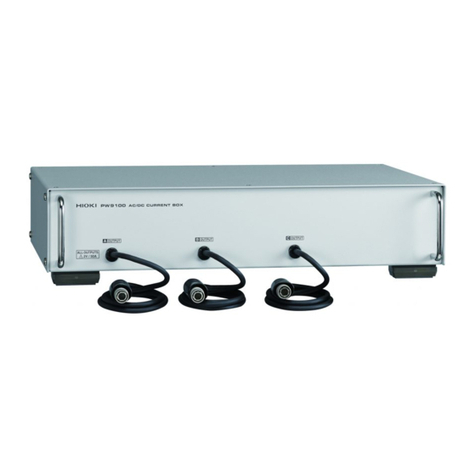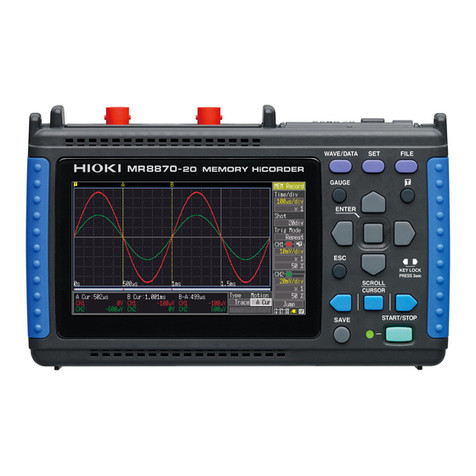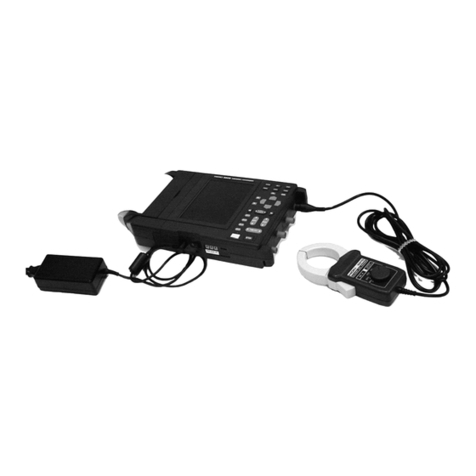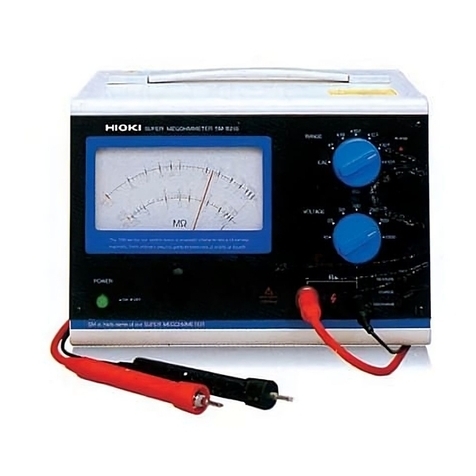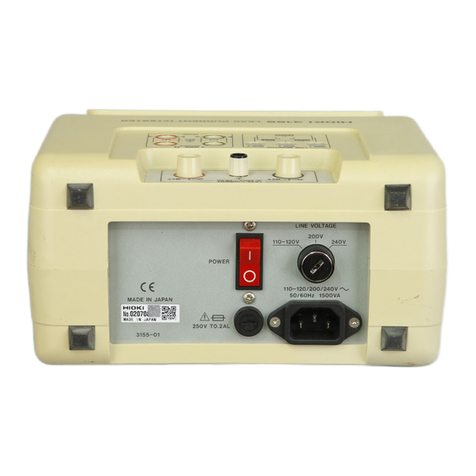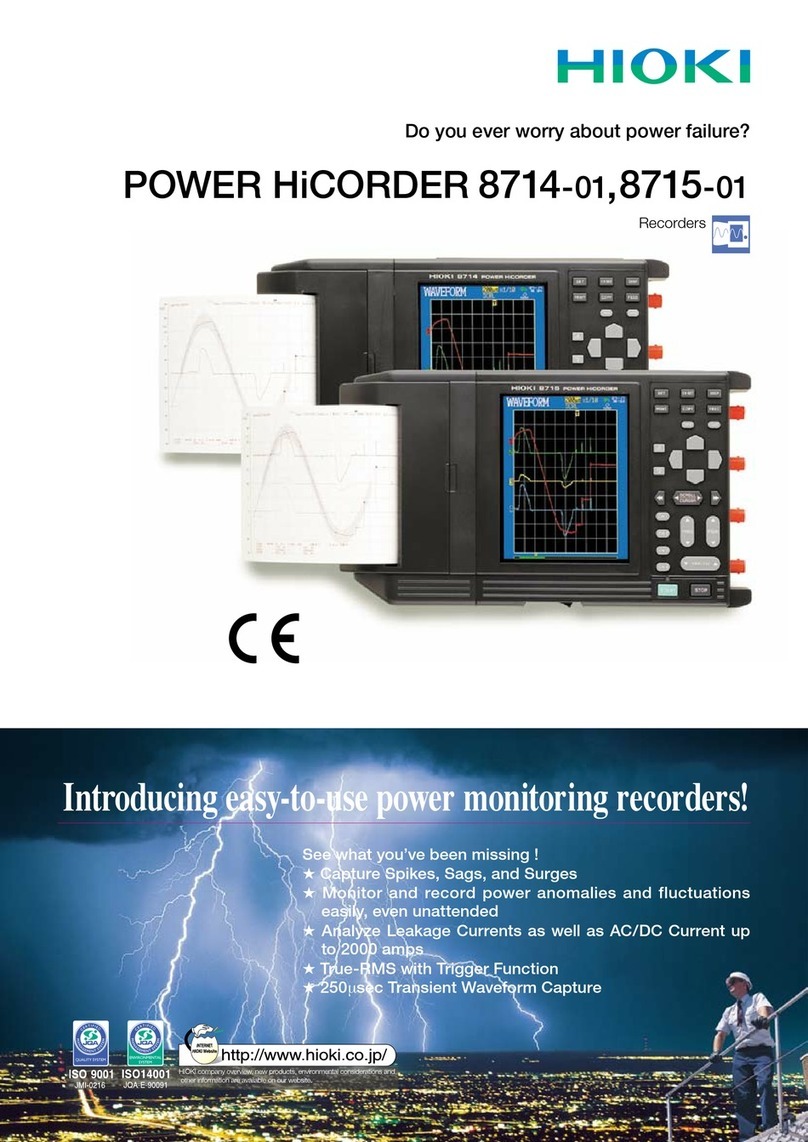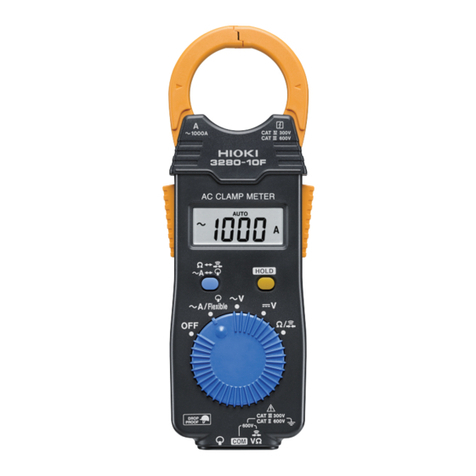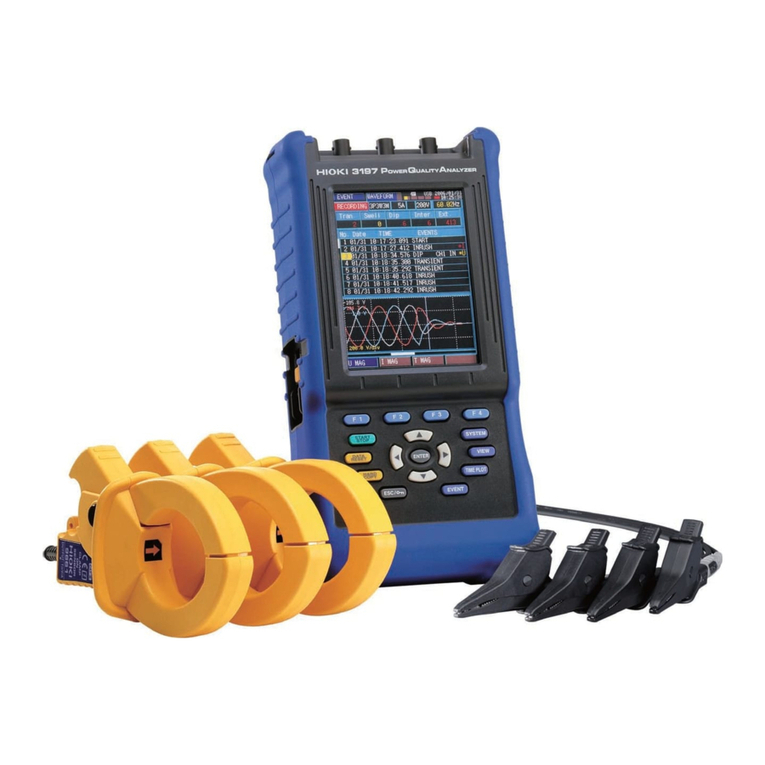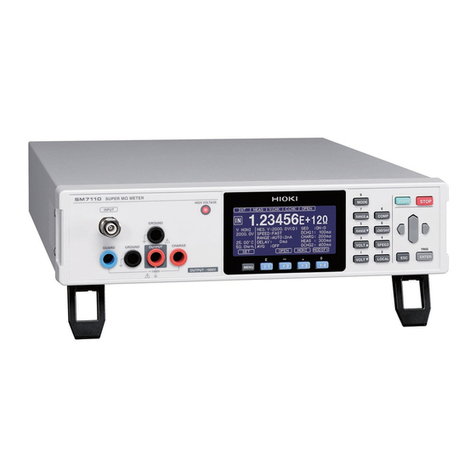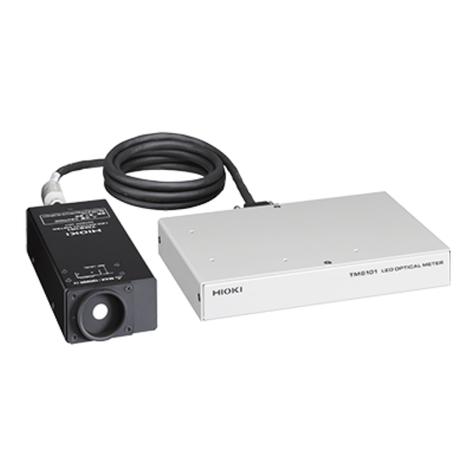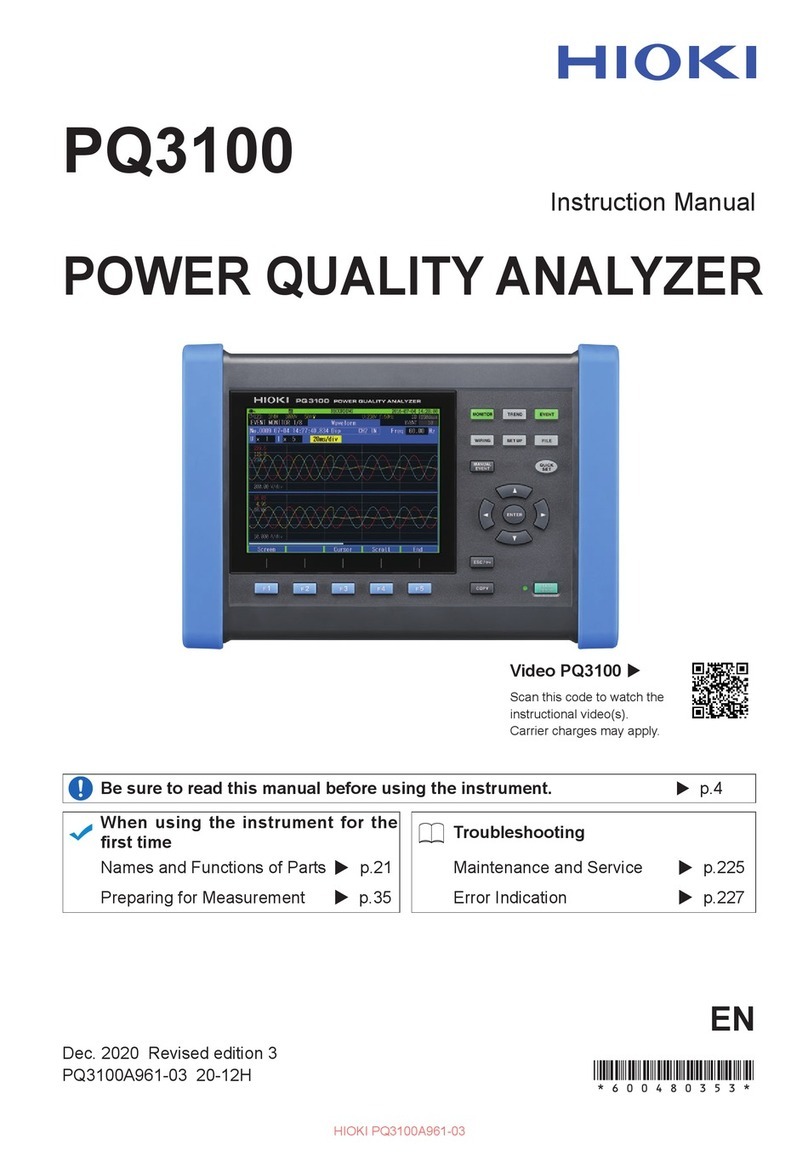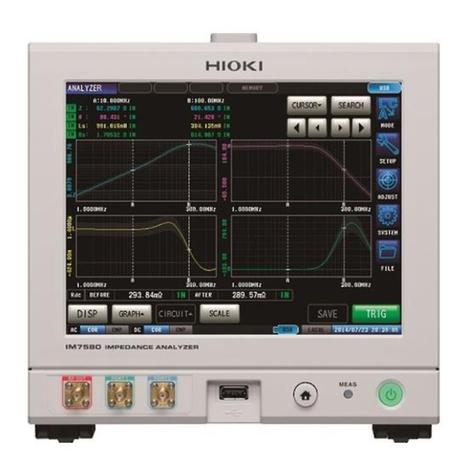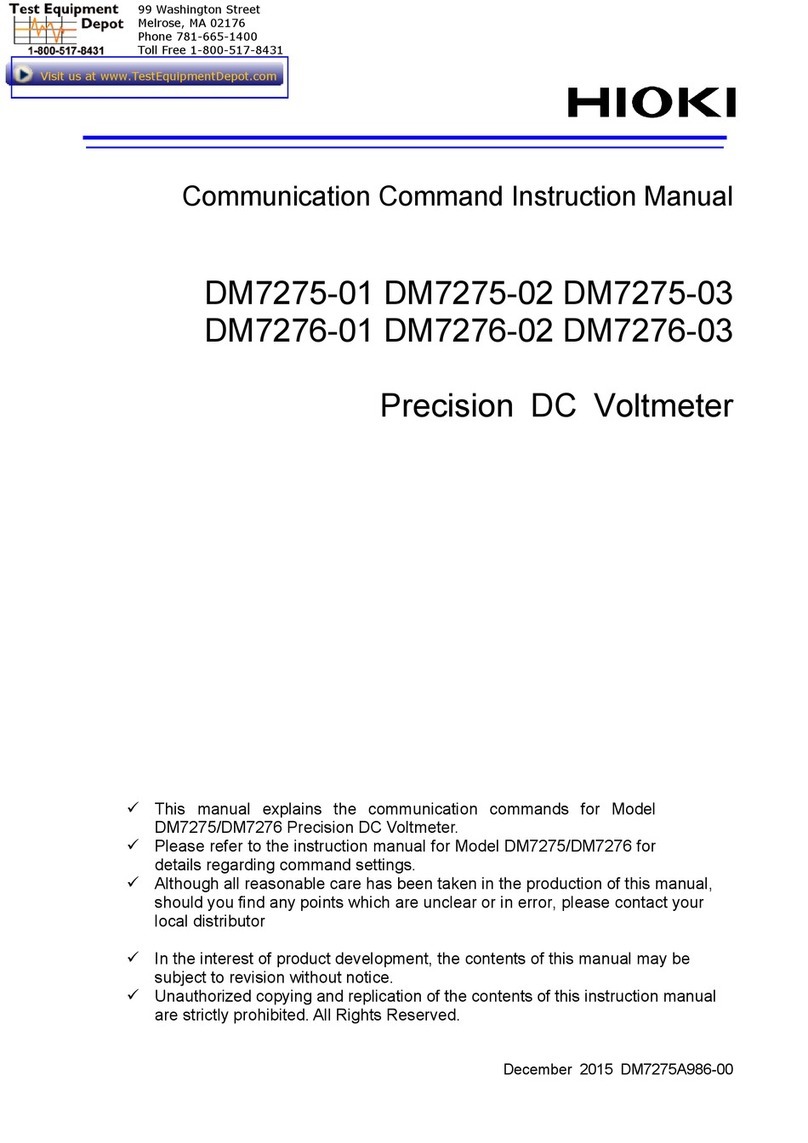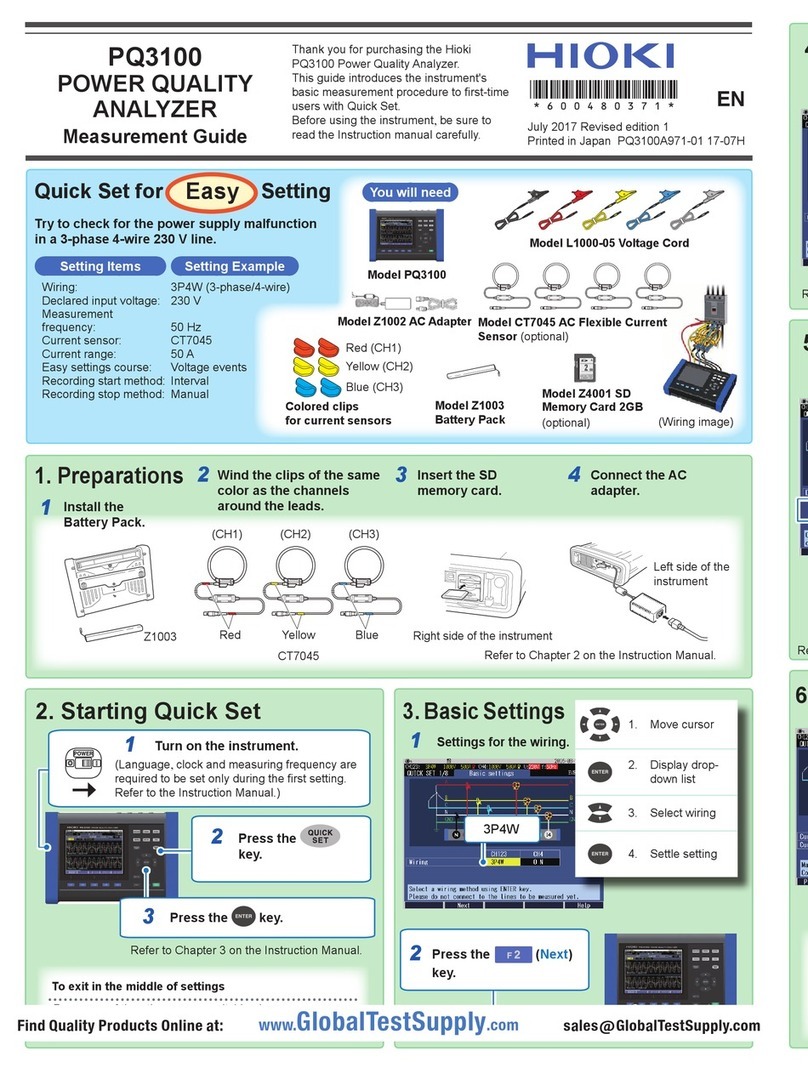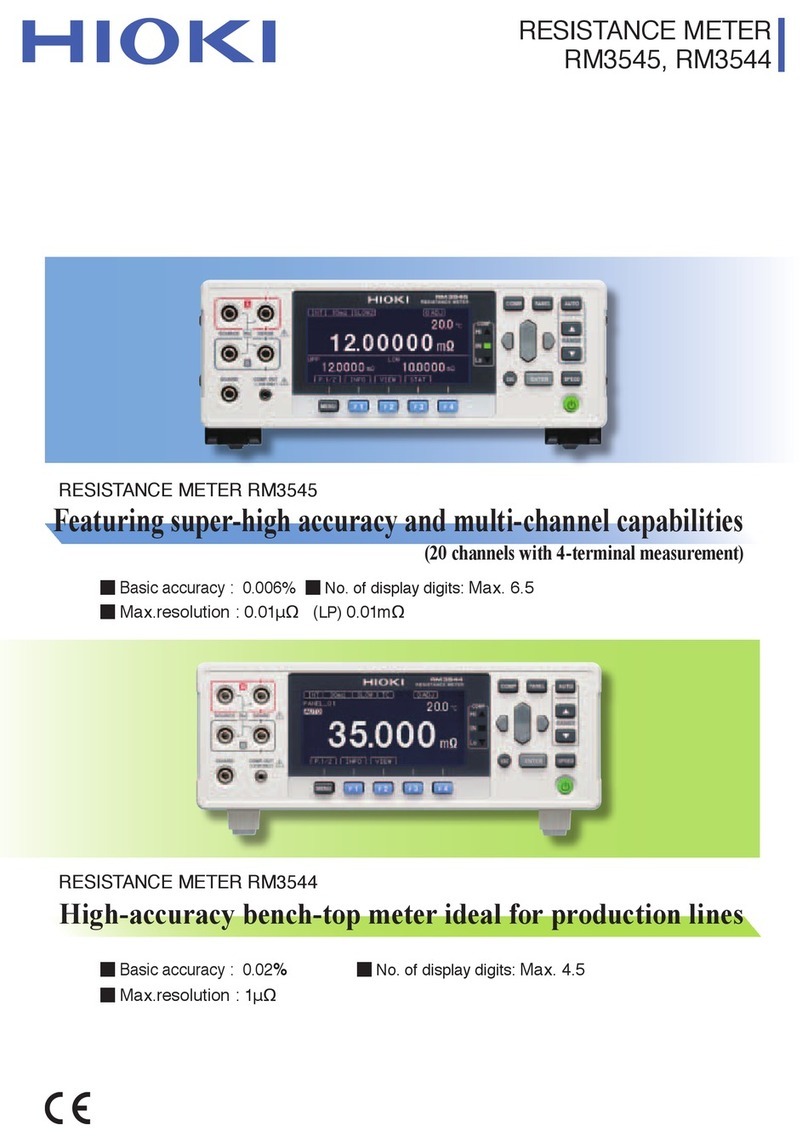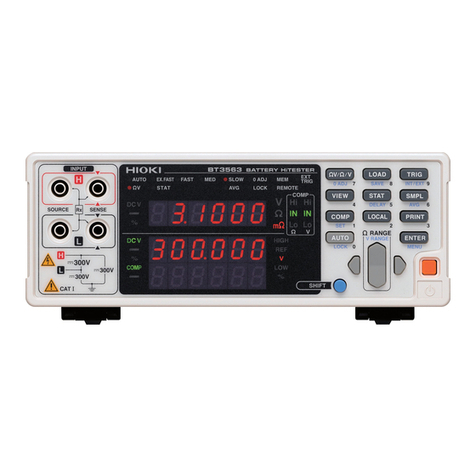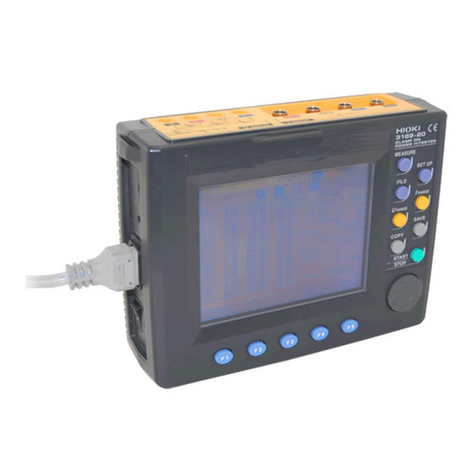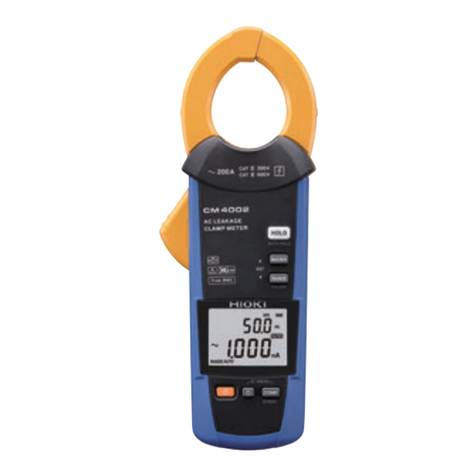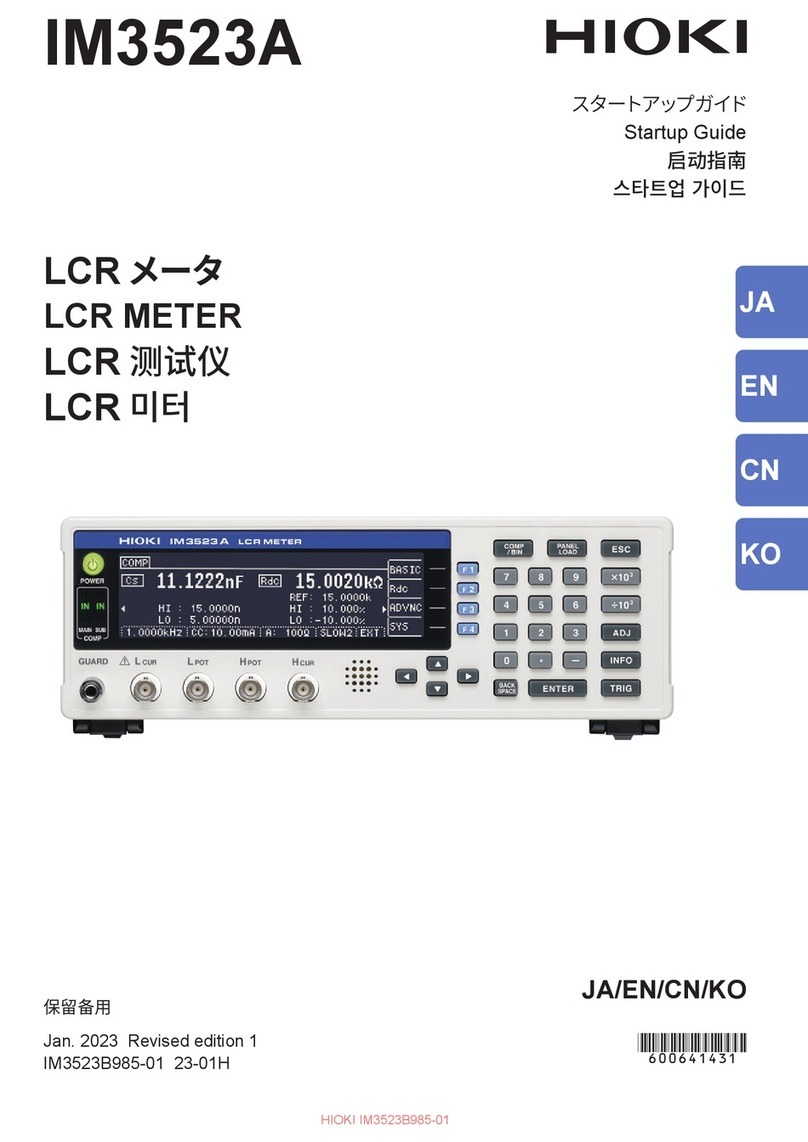
4.11 Setting the Trigger Delay 74
4.11.1 Control Screen Sequence 74
4.11.2 Details of the Setting Process 75
4.12 Setting Averaging 77
4.12.1 Control Screen Sequence 77
4.12.2 Details of the Setting Process 78
4.13 Setting the Testing Speed 80
4.13.1 Control Screen Sequence 80
4.13.2 Details of the Setting Process 81
4.14 Setting the Measurement Cable Length 82
4.14.1 Control Screen Sequence 82
4.14.2 Details of the Setting Process 83
4.15 Setting and Activating the Comparator 84
4.15.1 Control Screen Sequence 85
4.15.2 Setting the Comparator 85
4.15.3 Returning from Comparator Operation to
Normal Testing 88
4.15.4 Choosing How to Set the Upper and Lower Limit
Values 88
4.15.5 Setting the Upper or Lower Limit Value as an
Absolute Value (ABS) 90
4.15.6 Setting the Upper or Lower Limit Value as a
Percentage (%) Relative to a Standard Value 92
4.15.7 Displaying Measurement Values as Deviations
from the Reference Value(Δ%)
95
4.16 Setting and Activating the Scaling 97
4.16.1 Control Screen Sequence 97
4.16.2 Setting Scaling 98
4.16.3 Canceling the Scaling Function 99
4.16.4 Setting the Compensation Coefficient (a, b) 100
4.17 Panel Save Function 102
4.17.1 Control Screen Sequence 102
4.17.2 Details of the Setting Process 103
4.18 Panel Load Function 106
4.18.1 Control Screen Sequence 106
4.18.2 Details of the Setting Process 107
4.19 Setting the Beep Sound 109
4.19.1 Control Screen Sequence 109
4.19.2 Details of the Setting Process 110
4.20 Enlarged Display of Measurement Values 111
4.20.1 Control Screen Sequence 111
4.20.2 Details of the Setting Process 112
